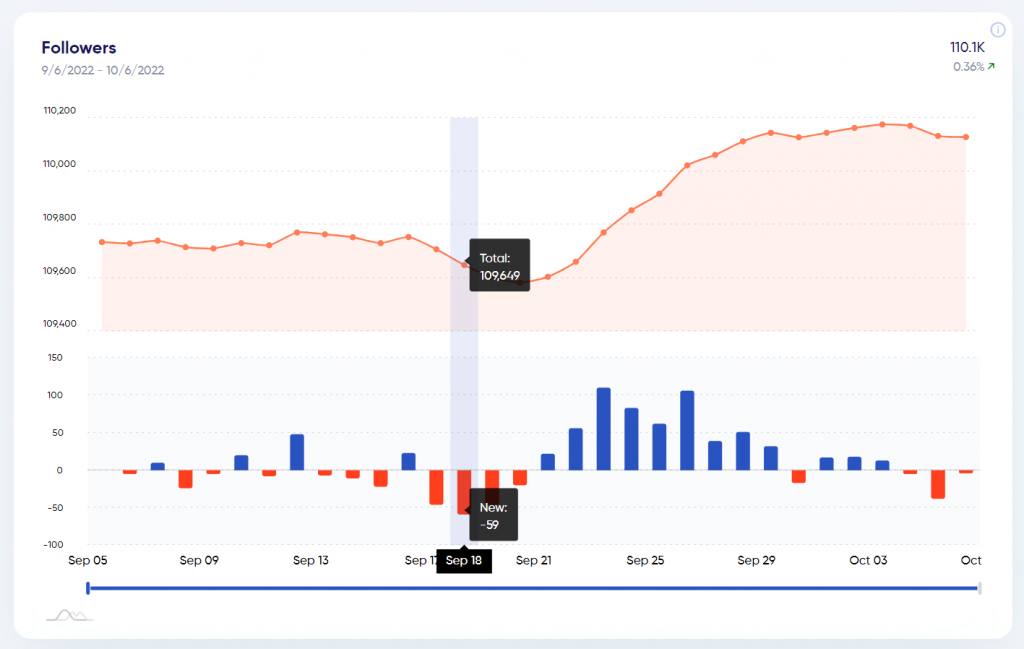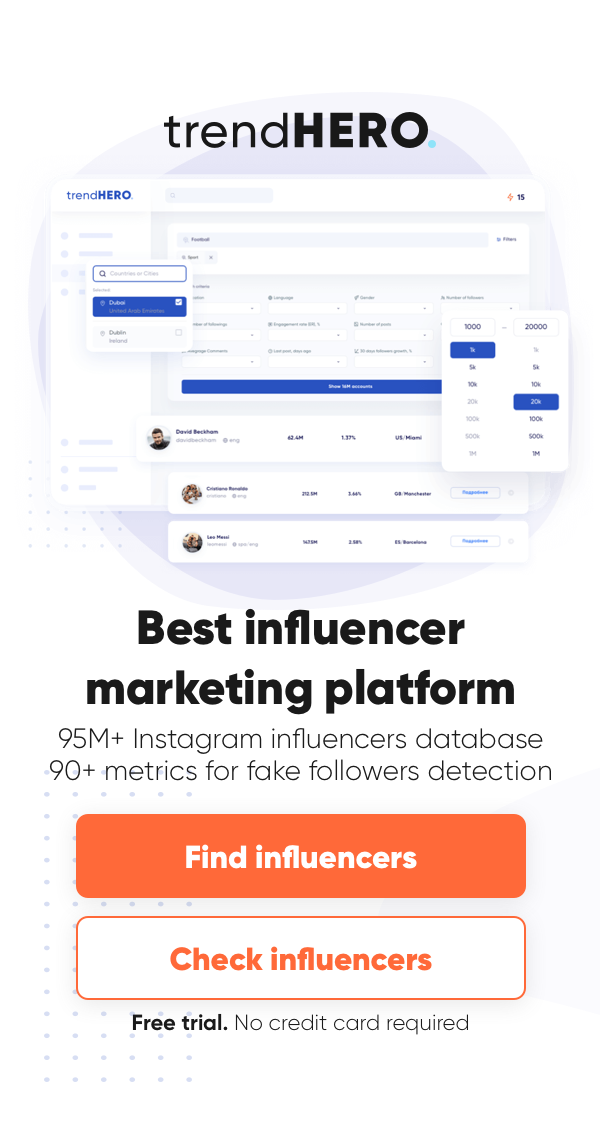- Home
- BLOG
- Instagram Business
- Influencer Marketing for Small Business: 6 Step Guide
Influencer marketing has become one of the most powerful tools for small businesses to reach new audiences and expand their customer base.
In fact, according to recent statistics, over 60% of marketers were using influencer marketing in 2020.
It’s clear that influencer marketing is here to stay and can no longer be ignored by small businesses looking to grow their presence online. Not only does it help build brand awareness and trust, but it provides an opportunity for companies to tap into a larger pool of potential customers through the influence of established personalities or celebrities in various industries.
Define Your Goals
When it comes to influencer marketing for small businesses, defining your goals is an essential first step. This can help ensure that you’re making the most of your resources and investing in the right type of campaign.
To get started, break down your goals into smaller objectives such as:
- increased brand awareness,
- better engagement,
- higher sales,
- or more website traffic.
Then, once you clearly understand what you want to accomplish, look for influencers who are already speaking about related topics and have a following that aligns with your target market.
Defining the scope of your campaign can also be extremely helpful when setting goals. For example, think about how much money you’re willing to invest and how long you want the campaign to last.
Also, consider other factors, such as geography and language, that may impact your reach and engagement levels. Finally, setting realistic and measurable targets will allow you to track progress.
Identify Your Target Audience
Identifying a target audience is essential in developing any successful influencer marketing strategy for small businesses. Without a clear understanding of the people you’re trying to reach, it can be nearly impossible to craft an effective plan and capitalize on the potential of influencer marketing.
To identify your target audience
- consider the type of people interested in and benefit from your product or service. Knowing their age range, gender, interests, location, and purchasing behavior will help you create more meaningful connections with them.
- ask yourself what content they prefer, as this will inform how you market your product or service through influencers.
It’s essential to conduct thorough research when figuring out who exactly your target audience is. Surveying current customers is one way to get an accurate picture of the people you should target with your influencer campaigns.
Additionally, analyzing website analytics, such as visitor demographics and popular pages, can give you helpful insight into who is already engaging with your company’s content and services.
Finally, don’t forget to leverage tools like social listening to keep up with trends related to what topics resonate most with your potential customers. This information can tailor your message so that it speaks directly to those individuals.
According to Greg Heilers, Co-Founder of Jolly SEO, “One of the things we’ve found to be most helpful when targeting influencers is to always start with your own customers first. Your customers are the ones who have already expressed an interest.”
Choose the Right Influencer
Regarding influencer marketing for small businesses, picking the right influencer is essential.
Choosing the wrong one can lead to disaster for your brand and even worse- wasted time and money.
The key to finding the perfect influencer lies in matching their values and message with your business’s. This means
- considering the influencer’s age, interests, lifestyle, and other commonalities with your target audience.
- ensure that the influencer has a sizable following on social media and a reasonable engagement rate.
- it’s also essential to consider any past partnerships they’ve had, as these will provide insight into what kind of content they create and how well that resonates with their followers.
You should also ask plenty of questions before partnering with an influencer – such as what platforms they use, how often they post, what type of content they typically produce, and if they have any plans or goals regarding the partnership you’re looking to form. This will help you get a better understanding of their capabilities and whether or not they’re a good fit for your company.
Set Up an Engaging Offer
A savvy small business knows the sheer power of influencer marketing and how offering a persuasive reward is pivotal to taking advantage of its influence. You can instantly target their audience by establishing an alluring promotion and elevating your brand awareness.
Incentives could include
- exclusive discounts,
- special offers,
- previews,
- or other unique experiences.
Whatever you choose, make sure that it is desirable for the influencer’s audience and fits in with the values of your business. These offers should also be tailored to each influencer so that they feel valued and more motivated to work with you.
For example, suppose you were running an online clothing store. In that case, baseball caps could be offered as incentives for fitness bloggers, or beauty bloggers could be given samples of makeup collections that aren’t available on the site yet. It may seem like a lot of effort, but ensuring your offer appeals to the influencers and their followers is essential in any successful influencer marketing campaign.
“Our experience has taught us that offering the right incentives is vital to getting influencers engaged,” said Tom Golubovich, Head of Marketing of Ninja Transfers. “If it’s something they feel their audience would be interested in, then it’s more likely to result in a successful outcome for both parties.”
When setting up an engaging offer, it’s essential to consider what content would benefit from this promotion. For example, consider whether text posts, images, or videos would work best – depending on your desired result – and what hashtags and keywords are associated with this content so that it resonates effectively with their followers.
Additionally, think about how often these promotions should be run – as too many promotions can reduce their effectiveness – and understand when best to launch them so that they reach the widest possible audience.
Track Performance and Analyze Results
You can see which influencers have the most success with your target demographic by tracking performance. You can also measure each influencer’s posts’ response rate and engagement levels, which will help you identify who resonates best with your brand.
Additionally, tracking your performance gives you insight into what content works best with your audience and what time works best to post it.

Analyzing results is equally important. It allows you to assess your influencer campaigns’ effectiveness over time and adjust them accordingly if needed.
For example, you can compare different campaigns against each other to see which performed better and determine why that was the case. It also helps you improve future campaigns by using insights from ones that worked well in the past.
Tracking performance and analyzing results might seem daunting, but plenty of tools are available to make it easier. From analytics dashboards to heat maps showing which posts got the most engagement – these tools are invaluable for helping small businesses get the most out of their influencer marketing efforts.
Optimize Your Follow-On Campaigns
Optimizing your follow-on campaigns after you’ve tracked performance is essential for small businesses looking to get the most out of their influencer marketing efforts. Making sure you have a baseline understanding of how well your chosen influencers are performing and where they are falling short can help you plan for future campaigns and make adjustments to improve effectiveness.
For example, find that one of your influencer partners has successfully driven sales to your website. It may be worth exploring ways to increase their influence by working with them more closely or providing more incentives to engage with their audience.
Similarly, if you have an influencer who hasn’t been performing as expected on social media, it could be worth finding out more about why this might be the case and what changes can be made to ensure success in the future.
In addition to using insights from tracking performance, optimizing follow-on campaigns also means being proactive in testing new strategies and tactics. This could include expanding the types of content used by influencers or experimenting with different promotion methods.
Trying different approaches will give you a better idea of what works best for your specific goals and allow for greater flexibility when planning future campaigns.
Finally, don’t be afraid to ask for feedback from your followers and influencers! This can help ensure that campaigns are tailored effectively to meet the needs of both sides and optimize results in the long run.
It’s important to remember that while there is no one-size-fits-all approach to successful influencer marketing, staying up-to-date on trends and adjusting campaigns accordingly can make all the difference in ensuring a successful outcome.
Conclusion
Influencer marketing can be an incredibly effective tool for small businesses looking to reach new audiences and increase brand visibility.
From tracking performance to optimizing follow-on campaigns, small businesses can use several strategies to maximize their influencer marketing efforts. In addition, small businesses can ensure they’re getting the most out of their influencer marketing campaigns by understanding the nuances of this powerful approach and staying up-to-date on the latest trends.
Instagram Engagement Rate Calculator For Free
Check any influencer's Engagement rate and analyze his or her followers growth history
Other free tools: Follower Count History, Instagram Follower Count, CPM Calculator





